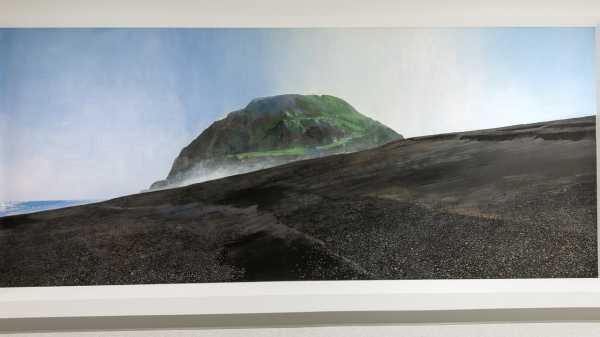
Save this storySave this storySave this storySave this story
Without fanfare, parades, or glory, the bookkeeping for America’s wars takes place in Indianapolis. The military’s bean counters are housed in the Bean Federal Center, which is named for Major General Emmett J. Bean, the former commander of what’s now the Defense Finance and Accounting Service. DFAS, which runs the books for the Army, Navy, Air Force, Marine Corps, and every other American defense agency, claims to be the one of the world’s largest finance operations. The Bean Center is scaled accordingly, with more than a million and a half square feet packed into a three-story monolith. Inside, in a maze of white-walled corridors, a small army of employees manages the payroll of the world’s most expensive military—a tab that includes the President’s salary. “People who have worked in the building for many years get turned around, just because the hallways are so long and everything kind of looks the same,” one government employee told me.
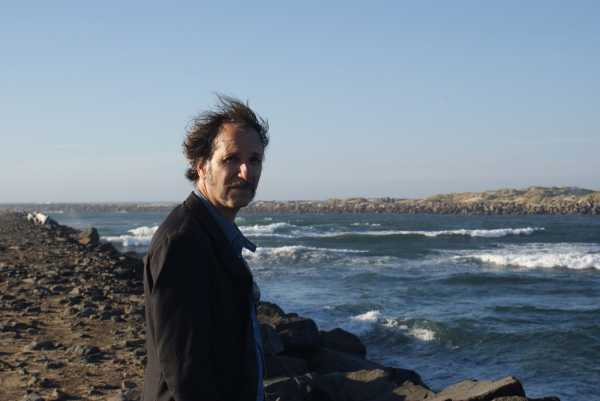
The artist Adam Cvijanovic.Photograph by Julia Carbonetta
It was these hallways—tile-floored, drop-ceilinged, both featureless and endless—that struck the painter Adam Cvijanovic as he toured the space more than a decade ago. “Straight out of Kubrick,” Cvijanovic told me, when I visited his studio in Brooklyn’s Navy Yard. A lanky sixty-two-year-old with a dry sense of humor, he was trying to explain how an artist who refused to register for the draft had come to create his most ambitious work inside the Bean Center. “I got this weird e-mail: you have been selected, et cetera,” Cvijanovic said. “Like a Willy Wonka-golden-ticket thing. So I was, like, All right, I’ll take it.”
At some point, Cvijanovic had been added to a little-known federal registry of artists. When the government begins an architectural renovation of sufficient scope—Cvijanovic learned of the Bean Center’s in 2011—it can grant one lucky artist a commission. Past recipients have included Alexander Calder (a big red metal sculpture in Chicago’s Federal Plaza) and James Turrell (neon lights on the façade of San Francisco’s Federal Building). “The commission is half of one per cent of the estimated construction cost, all inclusive,” the government employee explained. “Sometimes the artist says no. Sometimes they say, ‘Thanks, but I’m busy right now.’ Sometimes they say it’s not enough money. And sometimes they say, ‘Tell me more.’ ”
As it happens, Cvijanovic’s reading material of choice had been American military histories. He liked the idea of making art for people involved, however abstractly, in that history, and the Bean Center’s vast expanse of walls offered an irresistible canvas. Cvijanovic decided to fill the building with paintings of landscapes in which American wars had been fought. “They would have been happy if I just did something in the lobby, but I decided to do the entire building because I could,” he said. “In a way, all the experience I had made me ready to do this.”

“August 17, 1943, Schweinfurt-Regensburg Mission, Rhineland-Palatinate, Nazi Germany.”Art work by Adam Cvijanovic; Photograph by Al Ensley
Curiously, both Cvijanovic’s life and work could be described as an extended study of American hubris and its attendant landscapes. A self-taught painter who dropped out of his Cambridge, Massachusetts, high school at seventeen, Cvijanovic was initially hailed as a wunderkind—“Boston’s Jean-Michel Basquiat,” but for alluringly pretty, almost photo-realist cityscapes, rather than Abstract Expressionism. He was the youngest artist included in the 1984 Boston Museum of Fine Arts exhibition “Emerging Massachusetts Painters,” and he quickly acquired New York gallery representation. Then, as the overheated art market of the eighties cooled off, he was dropped. For much of the next decade, he worked as a kind of mural painter for hire, “making bogus things for casinos and rich people,” he said.
Painting a thirty-foot-tall Native American man emerging from a turtle for Mohegan Sun was, for Cvijanovic, uninspiring work, if reasonably well-paid. But he discovered that he enjoyed having a building as his canvas. For a modern artist, such opportunities were rare; Michelangelo had the luxury of papal commissions, rather than the more constrained economy of gallery shows and collectors. By 2000, however, Cvijanovic had discovered a solution: a medium that allowed him to paint at commercial scale on a fine artist’s budget. “I tried a bunch of different things before I came across Tyvek, but, when I did, I was, like, This is it,” he said. “This is the American version of a fresco. It’s portable. It’s cheap. It’s made out of petrochemicals. It’s perfect.”
Tyvek is a plastic film that looks like finely woven paper. Developed by DuPont in the nineteen-fifties, it’s made from polyethylene fibers, spun together at high heat, and used for everything from U.S.P.S. Priority Mail envelopes to P.P.E. Cvijanovic buys it by the roll and tacks sheets, ten feet tall and up to five feet wide, onto his studio wall. Holes in the material close up as soon as he takes the pins out, but larger sheets can sag and distort, so he paints his compositions in sections. To install it, he glues each sheet to the wall, where it becomes as seamless as a layer of paint; to take it down, he gives it a gentle tug, and it pops off the wall intact.
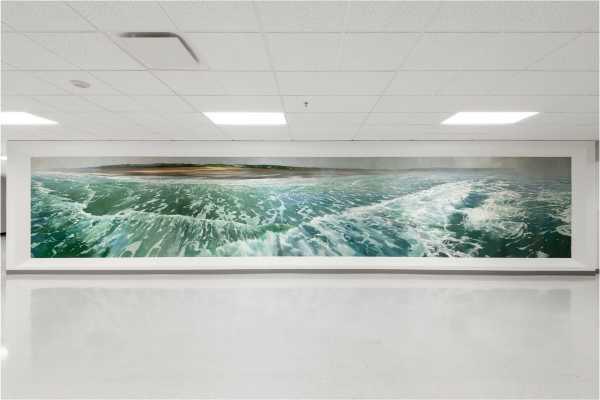
“June 6, 1944, Omaha Beach, Vierville-sur-Mer, Normandy, France.”Art work by Adam Cvijanovic; Photograph by Al Ensley
Since embracing Tyvek, Cvijanovic has painted vast and ambitious subject matter at a commensurate scale: a delirious tableau of a floating, discombobulated Los Angeles; a towering recreation of the Babylonian set for D. W. Griffith’s 1916 epic “Intolerance.” For the Bean Center, Cvijanovic set out to paint seventeen American battlefields, from the colonial era to the present, on nearly seven thousand square feet of Tyvek. This is a colossal task—laid end to end, the paintings are about as long as the Chrysler Building is tall—but Cvijanovic learned to paint fast during his years in the work-for-hire wilderness. He started his first mural in January, 2021, and finished the rest in just under two years. (Eight more are awaiting funding, which depends on congressional approval.) Although the completed images represent only a fraction of America’s military engagements, they include at least one from every meaningful confrontation: from an idyllic view of the Concord River, where “the shot heard round the world” began the American Revolution, to cirrus-streaked satellite imagery of the Spratly Islands, in the South China Sea, around which the U.S. and China are currently engaged in carefully choreographed displays of power.
Surprisingly, each battlefield is devoid of both humans and their traces, with the exception, in one painting, of the outlines of German farm fields, seen from above. (The battlefield, in this case, is the sky over Schweinfurt ball-bearing factories in 1943, when a bombing raid resulted in the loss of nearly six hundred American air crew members in a single day. “A catastrophic mistake,” Cvijanovic told me.) Whether heroizing military commanders or chronicling misery, most war painting is focussed on people. “Usually, if someone commissions a battlefield painting, they want to see the soldiers, they want to see the action,” Cvijanovic said. By removing that drama, he hoped the landscape might evoke a more abstract but also more encompassing emotional response.
At first glance, the result risks simply aestheticizing U.S. military history. The paintings are unnervingly picturesque: brilliant poppies against the violet-blue of a French afternoon, translucent ice floes glistening in the aquamarine waters of the Arctic, backlit palm trees in the eerie orange phosphorescence of a desert storm. If you didn’t know that these were the sites of enormous violence, you would think they were simply a gazetteer of some of Earth’s most majestic landscapes. “There’s no modernist shenanigans going on,” Cvijanovic said. “You’re getting a real nineteenth-century, Hudson River School view of things.”
Cvijanovic is a busy, obsessive presence in his studio. As he unrolled and pinned up sections from Omaha Beach—a foamy, green-gray English Channel, as if seen from the prow of a craft surging toward the shore—I realized that, although the landscapes seem unpopulated, they often imply a participant’s perspective. The angle at which I was admiring the movement of the waves was the viewpoint of a drenched infantryman wading into the waters under enemy fire—the “Saving Private Ryan” experience. In Picardy, the poppies fill the frame, looming above the viewer, as if seen by a soldier in a trench.
In one of Cvijanovic’s most striking works, his painting of Iwo Jima, the foggy peak of Mt. Suribachi—the site of the triumphant flag-raising that became one of the most iconic images of the Second World War—is visible at the left edge of the scene. But, as the image stretches right, a black-sand beach looms closer and closer in the foreground. It’s as though we’re face down in the pebbles—wounded, perhaps, or maybe simply prone, rifle in hand, taking aim. When I visited him, Cvijanovic was still finishing up some rocks, using a combination of Flashe, an expensive French paint, and white house paint for the highlights. He said the detail was based on a photo he’d found online, taken by a former marine, who had gone to Iwo Jima and knelt on the beach. Suddenly, the emerald-green sea, serene morning light, and jewel-like pebbles seemed full of tension. “It’s this very beautiful landscape, and it’s also a depiction of a certain position in a battle site,” Cvijanovic said. “So it depends on how you want to read it.” In the Schweinfurt scene, puffy clouds over the countryside seem picture-perfect; they’re also, if you know what you’re looking at, hiding German fighter planes. Everywhere, these gorgeous backdrops vibrate with invisible menace.
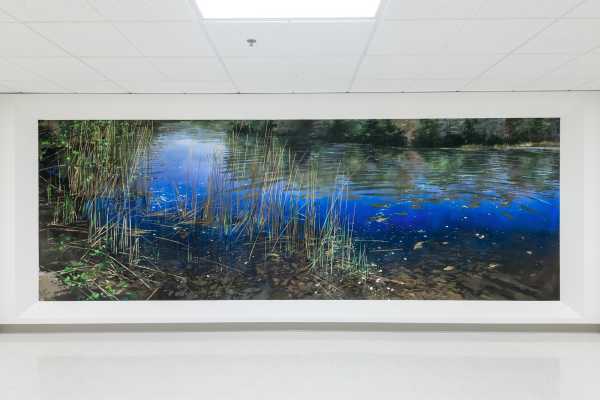
“April 19, 1775, Concord River, Province of Massachusetts Bay, British North America.”Art work by Adam Cvijanovic; Photograph by Al Ensley
Early in his career, Cvijanovic had the opportunity to spend nearly a year in Italy, living in a house just outside Rome and visiting villas, palazzos, and cathedrals. “One of the most beautiful things about all the frescoes is the way that people can just be hanging out, having their little lives, and there’s this grand backdrop behind them of the entire Bible,” Cvijanovic said. In the city of Viterbo, for example, birth registrations, marriage licenses, citizenship applications, and building permits are all filed in the shadow of frescoes depicting local history, mythology, and miraculous appearances of the Virgin Mary. “It’s just there, behind you, and you go on with your life, and yet it’s completely different,” Cvijanovic went on. “I was, like, I want to do that in America.”
Cvijanovic installed the seventeen completed paintings in December, 2022. Glued to the walls under bleak office lighting, the Tyvek pops, as if illuminated from within. The paintings are set into the frame of a slight bevel, turning them into dioramas, or a series of windows. Meanwhile, the humdrum rhythms of the corridors—carts shuttling paperwork from one department to another, administrators walking back and forth between their desks and the elevators—are endowed with a new significance. For the roughly six hundred people working in the Bean Center, the accounting of American conflict now occurs quite literally amid the landscape upon which it unfolds.
Cvijanovic’s embrace of ambiguity doesn’t mean that he rejects narrative logic. On the building’s ground floor, the battlefields are in the continental U.S.: Concord, in springtime; Gettysburg, in July; the autumnal battle of Prophetstown, which was fought against a Native confederation led by the Shawnee hero Tecumseh; and the peach-blue snowscape of Jockey Hollow, the hardest winter in the Revolutionary War. So far, so successful—the young U.S. triumphant in every season, if at great cost. The second floor moves to America’s imperial era, with a series of either strategic or straightforward defeats: scenes from Afghanistan, Iraq, and Vietnam. One hallway is dominated by barren, snow-covered mountains that were the backdrop for the Battle of Chosin Reservoir, during the Korean War. For nearly three weeks, the U.S. was overwhelmed by more than a hundred thousand Chinese soldiers streaming into North Korea, leading to what one historian called “the greatest evacuation movement by sea in U.S. military history.”
Finally, on the third floor, the scenes become abstract, even extraplanetary. The Gulf War is represented by a starry sky; the conflict marked the début of G.P.S.-guided missiles. Greenland’s glaciated landscapes are the site of the Cold War, both figuratively and as home to the Distant Early Warning Line, a network of radar stations meant to detect an inbound Soviet attack. The American battlefield, Cvijanovic seems to imply, is everywhere, and elemental.
For Cvijanovic’s final eight paintings, which still require funding, he plans to include battlefields in Canada, Italy, Libya, and Cuba. After that, his work on the Bean Center’s walls will be complete. “That’s where it becomes this weird kind of interactive piece,” he told me. “It changes the people standing in front of it, and vice versa.” Cvijanovic has heard from veterans in the building that the Afghan and Iraqi landscapes, in particular, have spurred profound, sometimes unsettling encounters. But his favorite compliment came while he was installing his first battlefield, a golden-purple desert scene from the Apache Wars. “Some lady who works there was walking down the hallway FaceTiming her friend,” Cvijanovic said. “She starts looking at the painting, and she says, ‘Hey, we don’t have to kill ourselves—this place isn’t going to look like an asylum anymore!’ ”
The difference is telling. Cvijanovic’s murals could incite a confrontation with the costs of war, or merely beautify the space where wars are funded. “They may think about it one way at first, and another way later, in a different mood,” Cvijanovic said. “We’ll see.” ♦
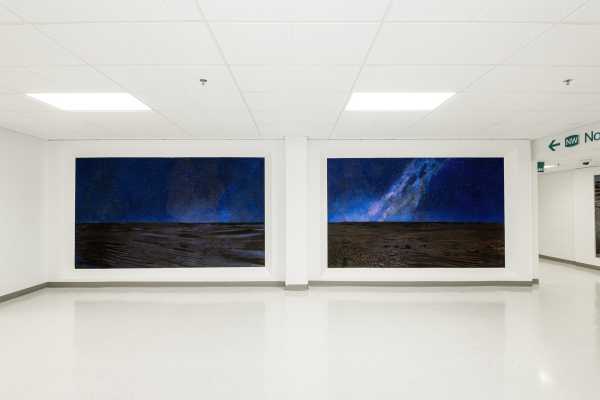
“January 17-February 28, 1991, Desert Storm, Al-Ahmadi, Kuwait.”Art work by Adam Cvijanovic; Photograph by Al Ensley
Sourse: newyorker.com